La Pagarine, Routes du Sel or VIA di Sale…there’s alot of hills!
One thing that really struck me on this walk is the hills. Mountains really, but in my naivety I kind of thought hills. The mountains to give them there full respect are steep. To go up you must either rise up or rise via a switch back of which there are many. The steepness of the terrain made for amazing views as we traversed small streams through to looking hunderd’s of meters down ravines to wildly dashing rivers. It was stunning, exhausting but magnificent all at the same time. The ridge lines afforded great views of the terrain ahead. More steep plunges and rises. The territory not for the faint hearted.
I have to say that the river valleys were my favorite. Tiny, incredibly narrow stone bridges dot the route brings back the reality of the walk. These very same bridges have been crossed for hundreds of years carrying precious white gold (sea salt) to the inland city of Cuneo.
In places, often on steeper terrain you find cobbled stones worn smooth where the mule trains carrying sea salt made there way.
We left Sospel early. Partly as it so much cooler. A typical day will see the heat rising through to around 6pm and most days it was well over 30 Celsius. By the end of the day we were at Breil sur Roya. A pretty town on the banks of the Roya River which we had followed from our lofty high-peak trail for much of the day.
The next couple of days proved very similar. Walking, heat and nothing but solitude as there are precious few towns to stop at on the way. Saorge was a welcome diversion and we made our way up to the monastery and town precipitously perched on an outcrop of rock a few hundred meters above the Roya river.
Lucky for us there were markets in both Breil and Saorge so we were able to stock up on a Provencal staple pissaladière. I’m not doing it justice when I describe it as pizza bread smothered in caramelized onions, olives and or anchovies. If you’re a fan of the salty fish then you’ll know that it’s critical to have good anchovies and the bench mark was set as we compared critically each pissaladiere we tried. Recipe here
We crossed into Italy and then back into France. This whole area used to be part of the Duchy of Savoy. Rich and influential the Savoy Duchy was a significant regional power from the late 1400’s through to the 1860’s. Savoys strategic location made it a target for French occupation in the 16th and 17th century. And to be fair nearly everyone seemed bi or tri lingual. The whole area on both sides of the border has a different feel. Provencal but Italian at the same time. Possibly because of the its history. The last border change was post WW2 when Italy handed back villages like Tende and La Brige plus several key mountain passes.
This part of our journey ended in Tende. A funky little village on the edge of the Alpes proper. Just below the Col de Tende the 1800m pass and the well travelled route de sel over the mountains to Italy.












